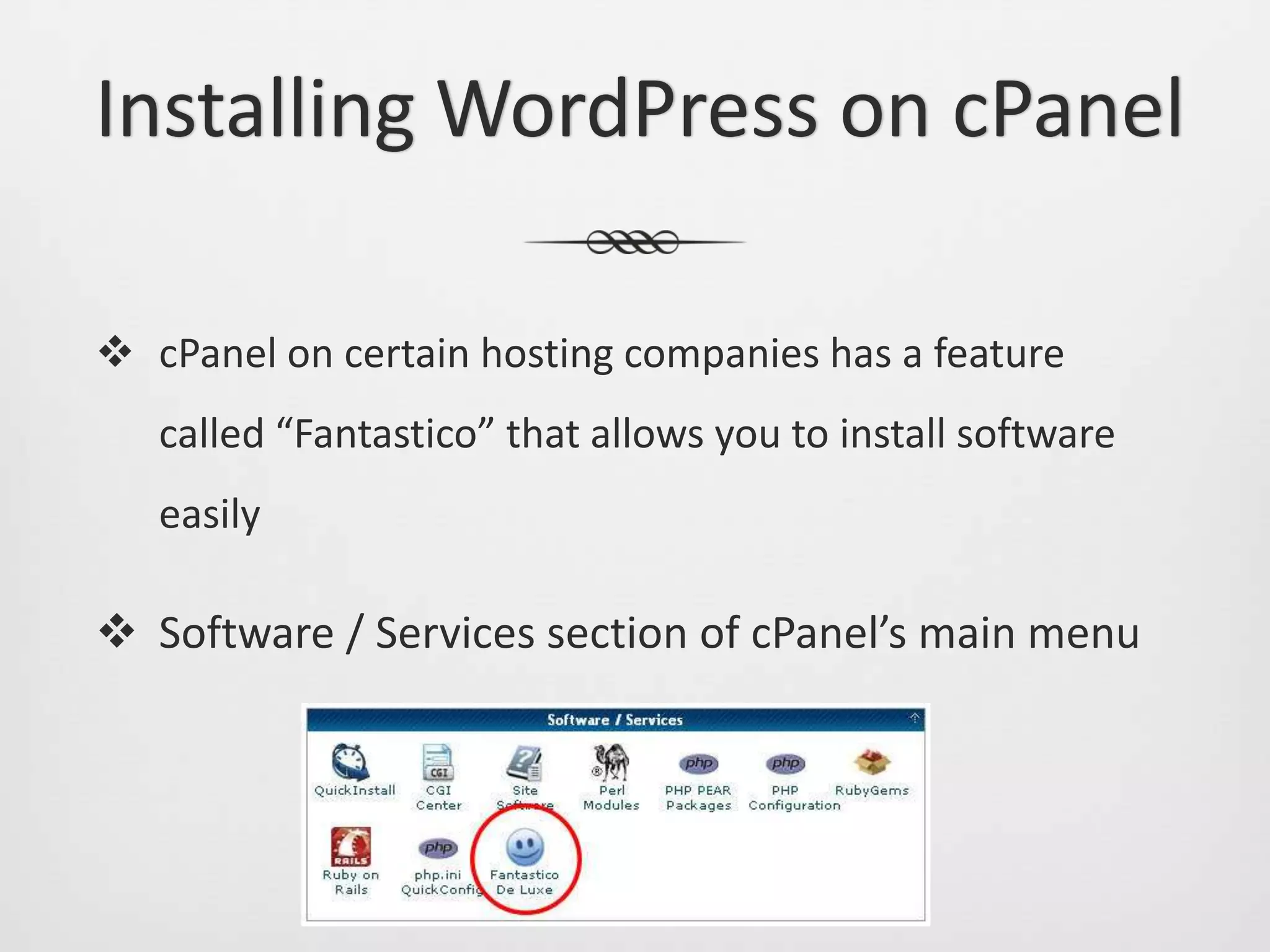The document provides instructions on getting a website off the ground, including registering a domain name, finding a web host, using content management systems, and setting up Google Analytics. It explains concepts like domain names and top-level domains, domain registrars, web hosting options like shared, dedicated, and virtual private servers. It also covers content management systems like WordPress, Drupal, and Joomla, and how to install them. Finally, it discusses using Google Analytics code to track website visitors and recommends placing the code before the closing </body> tag for optimal page loading.
































































![Google Analytics Code
What the Google Analytics code snippet will look like:
<scripttype="text/javascript">
var _gaq = _gaq || [];
_gaq.push(['_setAccount', 'UA-24017494-1']);
_gaq.push(['_trackPageview']);
(function() {
var ga =document.createElement('script'); ga.type ='text/javascript'; ga.async =true;
ga.src = ('https:'==document.location.protocol ?'https://ssl' : 'http://www') +'.google-
analytics.com/ga.js';
var s =document.getElementsByTagName('script')[0]; s.parentNode.insertBefore(ga, s);
})();
</script>](https://image.slidesharecdn.com/athenagetyourwebsiteofftheground-120303105212-phpapp01/75/Get-Your-Website-Off-the-Ground-65-2048.jpg)




